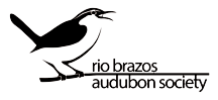For backyard birding enthusiasts, attracting more numbers and species to your yard is a fun challenge and can be broken down into 3 major components: food, water, & shelter. The most common food is birdseed, but other types of food attract different species of birds that may be in the vicinity. The quality of your bird feed and understanding what ingredients the birds prefer will make the blend more effective. Insects (which can be purchased fresh or freeze dried) are the next biggest food group. Insects are best placed on a platform feeder, and often attract breeding birds eager to feed their young. Fruits and berries constitute another major food group for many birds, such as the waxwings, robins and migratory birds (orioles, tanagers and grosbeaks, etc.). Cakes or bells made of fruit, nuts, and insects are easily available and are long-lasting. They are a fantastic way to get some of the more elusive, specialty feeder birds to your yard. Suet, a mix of solid fats and proteins, is another effective food source for birds, because it also provides a high fat content necessary during times of high energy expenditure, such as in cold winter weather, migration and breeding. Enhancing the feeder food supply with native berry bushes, and native trees will make your yard attractive to more diverse birds and wildlife. Possumhaw Holly, American Beautyberry and Red Mulberry are all great for the Bryan/College Station area. These provide native berries that are an excellent source of food and are highly sought after by the fruit-eating birds that migrate through our area, like the strikingly beautiful Rose-breasted Grosbeak. Red Mulberries, often seen in a negative light, can be planted away from car or foot traffic areas to make them a wonderful addition.
Water is another very important component to your yard. Still water dishes in close proximity to your food will be utilized and desirable, especially in the hot, dry months of the Texas summer. Adding a pump of some kind whether solar or electrical, will attract more birds as they hear the water and seek it out. Keep in mind that birds of different sizes and leg lengths will use different depths of water. Using rocks or some features that allow for different depths will aid in the diversification of use by various birds.
Lastly, shelters, including perennial bushes, native annual plants, and structures, are key components to attracting birds to your yard. Many bushes are also food sources as well as shelter points. Even if the shelter is not a food source, it offers a place for immediate escape if a threat is perceived. Shelters enable birds to relax and eat more, and thus they will use your yard more. My tomato plants, tomato vines, and tomato cages are often used by hummingbirds as places to hide, as they are fairly close to my flower bed and hummingbird feeders. There are numerous native plants that provide fantastic shelter and food, depending on the time of the year. Possumhaw Holly is a berry producer that has numerous small red berries (female plant only) in the fall and winter, but the flowers themselves attract many insects which in turn attract numerous insect-eating birds to your yard, including some stunning species of warblers. Because Possumhaw Holly is a very dense yaupon-like bush, it is a great shelter plant and is often used by open-nesting birds. Autumn Sage is another dense, low bush that is great for hummers in the spring and summer, and the seed heads are good for seed-eating birds in the winter. These perennials provide fantastic shelter and food for our feathered friends!
These are just a few ideas to improve your yard, and there are knowledgeable groups willing to help you tailor your yard to your location. The Post Oak Native Plant Society, Texas Master Naturalists and Rio Brazos Audubon have local chapters here in B/CS and are great sources of information as well. Check these groups for seminars and plant sales to help you optimize your home habitat.
Written By: Sandy Dillard, President – Rio Brazos Audubon Society
